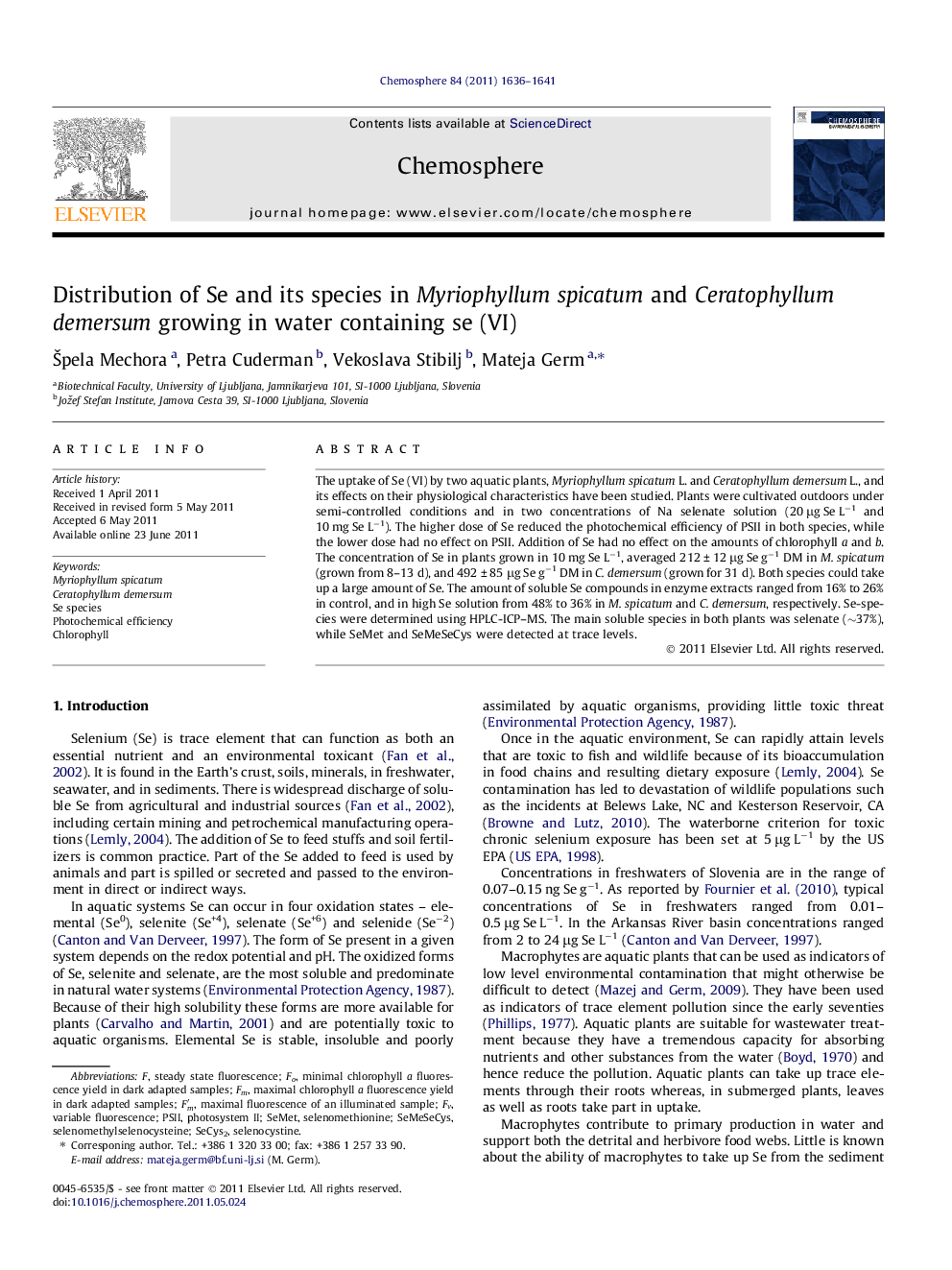| Article ID | Journal | Published Year | Pages | File Type |
|---|---|---|---|---|
| 6311722 | Chemosphere | 2011 | 6 Pages |
Abstract
⺠Both species are capable to absorb significant amount of Se (212 and 492 μg Se gâ1). ⺠Percentage of soluble Se compounds in M. spicatum was 48% and in C. demersum 36%. ⺠The main soluble species in both plants was selenate. ⺠SeMet and SeMeSeCys were detected at trace levels. ⺠Identification of SeMeSeCys shows to the same Se pathway as in accumulator plants.
Keywords
Related Topics
Life Sciences
Environmental Science
Environmental Chemistry
Authors
Å pela Mechora, Petra Cuderman, Vekoslava Stibilj, Mateja Germ,
